It can be challenging to talk to your child about autism, especially if they are newly diagnosed. Here is a list of books to help you explain autism to your child and help them make sense of their Autistic experiences. These books may also be useful for siblings and other children who are not Autistic, to introduce ideas around neurodiversity, support, and inclusion.
The following books are aimed at younger readers. If you are looking for books for pre-teens, teens, or adults, please look out for our upcoming lists.
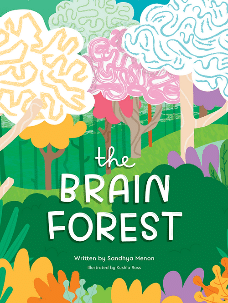
The Brain Forest by Sandya Menon
Brains that go fast, brains that go slow, brains that do what they’re told, brains that say NO! The Brain Forest is a captivating and heartwarming book that introduces children to the many different kinds of brains that exist in this world. With vibrant illustrations, this book explores neurodivergent conditions such as autism, ADHD, OCD, and learning disabilities, offering tips around support and inclusion along the way.
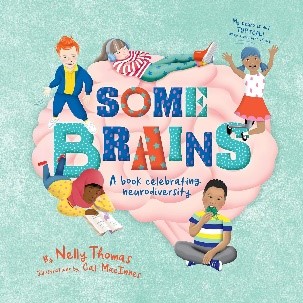
Some Brains by Nelly Thomas
Some Brains is a book in the Some Kids series. It teaches that neurodiversity is an essential part of human diversity, without which we would not have people like Picasso, Einstein, or Greta Thunberg. Some Brains encourages kids to look for the strengths in others, not their weaknesses, and to recognize that brains are like fingerprints- uniquely and wonderfully our own.
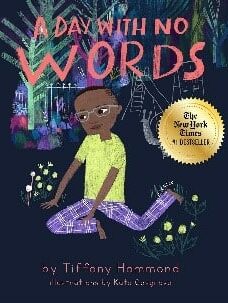
A Day With No Words by Tiffany Hammond
A Day With No Words is a colourful and engaging picture book for young readers. It depicts what life can look like for non-speaking or minimally speaking Autistic children who use Augmentative and Alternative Communication (AAC) – in this case a tablet – to communicate with others. It is written by Autistic mother of two Autistic sons, Tiffany Hammond.

The Autistic Boy in the Unruly Body by Gregory C. Tino
The Autistic Boy in the Unruly Body deals with the intersection of autism and what is known as apraxia. Apraxia refers to a mind-body disconnect, where the body does not follow what the brain is telling it to do. Gregory C. Tino, who has struggled with apraxia on a daily basis throughout his life, invites his readers to imagine being born into a body that disobeys. Imagine not being able to sit still, he writes, or having a mouth that cannot form the words you are trying to say. His book encourages perseverance, understanding, and self-acceptance.
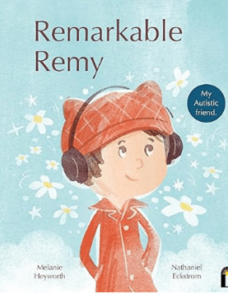
Remarkable Remy by Melanie Heyworth
Remarkable Remy is a warm and positive story that highlights the joys of having Autistic friends. The story helps explain the Autistic brain – how it works a little differently and how unique it is – and how our neurodivergent friends make the world remarkable!
Remarkable Remy illuminates the experiences and strengths of Autistic people in a way that children and young people can easily relate to and understand.

Just Right for You
“From the moment you began to grow, I knew that you would be just right…”
Also written by Melanie Heyworth, Just Right for You is a book about self-acceptance, advocacy, and embracing difference. It helps parents introduce autism to their child and reassure the child that they are accepted as they are.
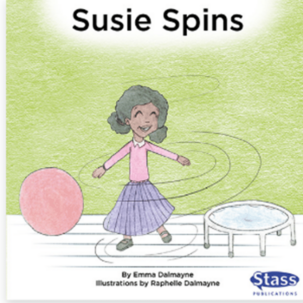
Susie Spins by Emma Dalmayne
Susie Spins is a book for peers, teachers, and parents. Through the character of Susie, an Autistic child who loves to spin, it shows that Autistic children have hopes, dreams, and hobbies, just like any other child. Susie is a nonverbal communicator and the book highlights her way of communicating with her friends through Sign Language
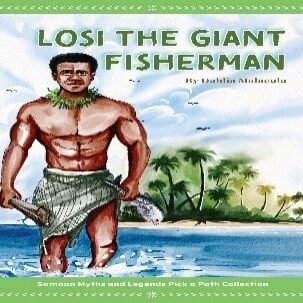
Losi the Giant Fisherman By Dahlia Malaeulu, and her son Mason
Losi and the Giant Fisherman is the retelling of a traditional Samoan story through the eyes of a neurodivergent child. The book highlights the value of human difference, focusing on Losi’s unique features as sources of power and positive change. Through the story, Malaeulu explores the idea that neurodivergent features can be superpowers- empowering neurodivergent individuals to change the world. The book is written in accessible font, with playful illustrations to help readers with sensory issues.
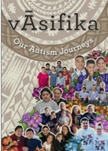
vĀsifika
vĀsifika is a collection of stories about Pasifika families and their Autistic children. It features families from a range of backgrounds, including families with Samoan, Tongan, Niuen, Cook Island, and Tokelauan heritage. In the book, we hear from an Autistic child and teen, as well as from parents, grandparents, an educator, and other family members. Put together by an all-Pasifika team of writers and illustrators, vĀsifika presents a rich and diverse Pasifika perspective on autism.
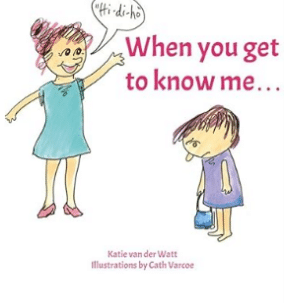
When You Get To Know Me by Kate van der Watt
Written by a speech language pathologist, When You Get to Know Me challenges readers to remember that everyone is different and that it takes time to get to know others. The author highlights common experiences of Autistic and neurodivergent children, including sensory differences, unique points of view, and barriers to learning and inclusion. The book is full of rhyme, rhythm, colorful illustrations, and interesting characters, presenting a powerful message of inclusion and acceptance.

When my Brain is Messy by Tania Wieclaw
When my Brain is Messy is written from the perspective of a young Autistic dinosaur. Featuring a rhyming story alongside colourful illustrations, the book follows the dinosaur as he navigates sensory processing differences and big emotions. The story is interwoven with age-appropriate coping strategies that help support emotional regulation. This book is recommended for children aged 2-8 years.

The Rainbow Brain by Sandhya Menon
The Rainbow Brain describes what it is like to have a special kind of brain: a Rainbow brain. Focusing on autism and ADHD, the book is a neuro-affirming introduction to difference, disability, identity, and accommodations. With vibrant illustrations throughout, it encourages children to explore the way they think and to embrace the features that make them unique.
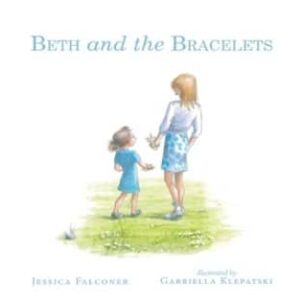
Beth and the Bracelets by Jessica Falconer
Beth and the Bracelets is a book about a young Autistic girl struggling to navigate school, the ever-changing social landscape of female friendships, and her own powerful emotions. The story depicts the challenges that Autistic students can face, from bullying and isolation, to feelings of depression and anxiety, to meltdowns and panic attacks at school. It discusses ways of coping with emotions, and what adults and other students can do to help Autistic students who are feeling overwhelmed. This book is colorfully illustrated and is suitable for children in their early years of primary school.


